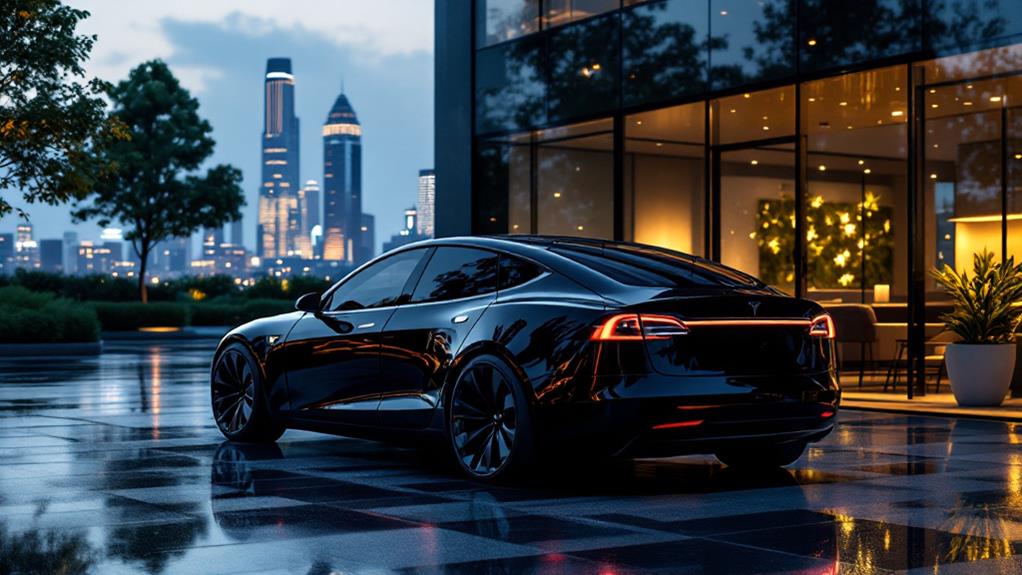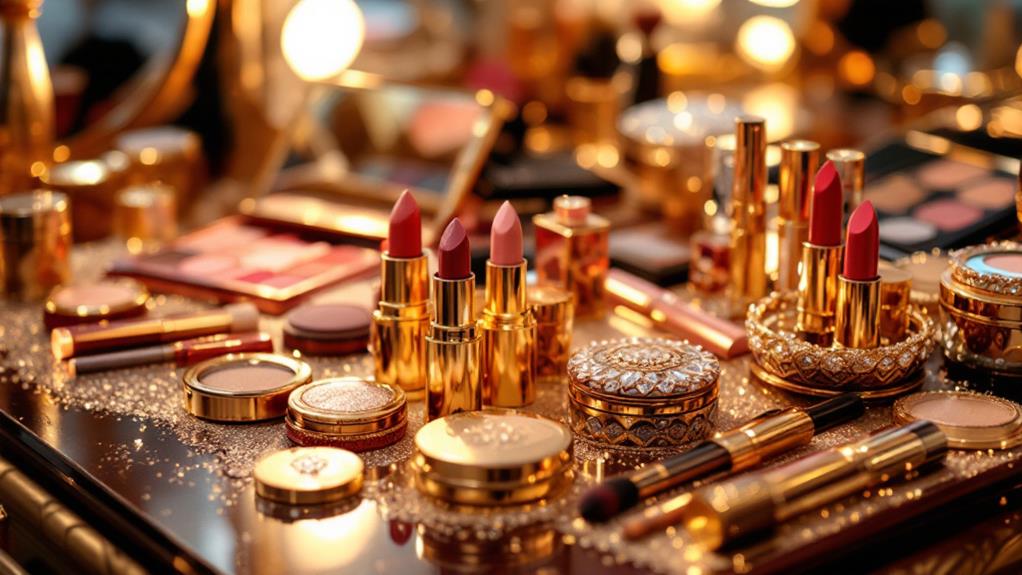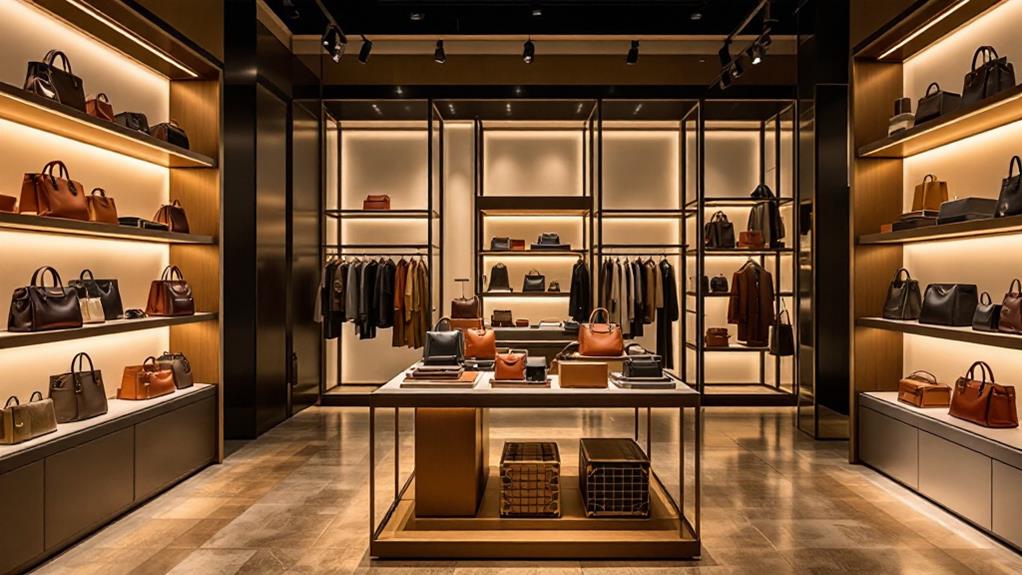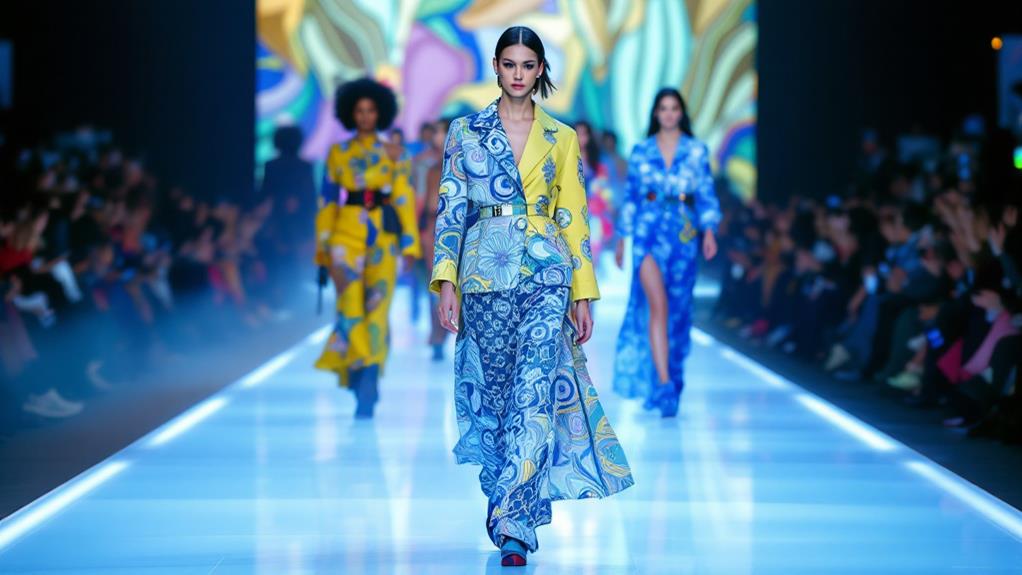The History of Lancôme: From French Roots to Global Luxury
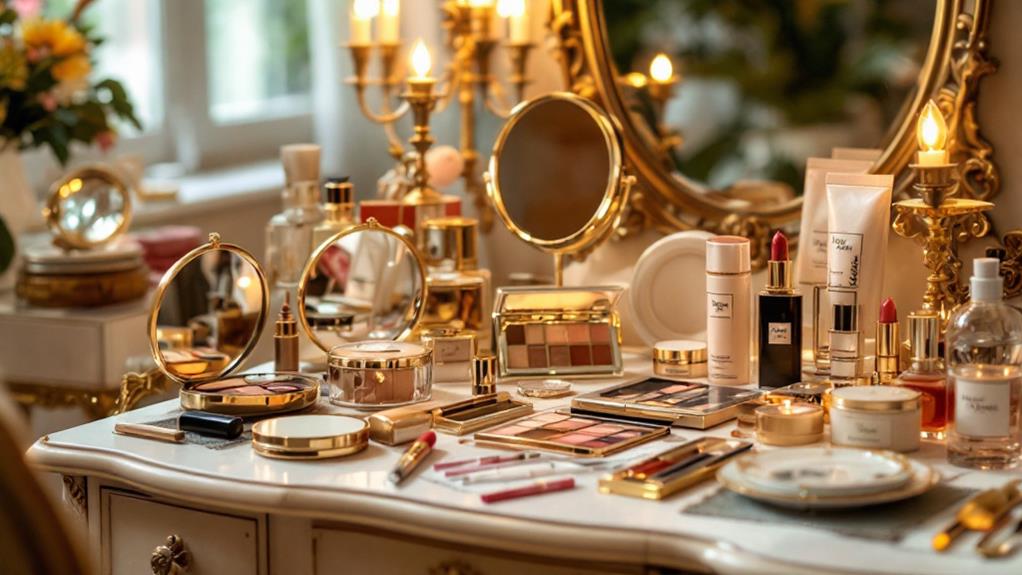
Lancôme began its expedition in 1935, founded by Guillaume d'Ornano and Armand Petitjean, with a vision rooted in French elegance and luxury. Inspired by Château de Lancôme, the brand launched its initial product, Nutrix, in 1936 to emphasize skincare. Initially renowned for its enchanting fragrances revealed at the 1935 World's Fair, Lancôme solidified its place as a perfume powerhouse. In 1964, joining L'Oréal accelerated Lancôme's global expansion while preserving its rich heritage. The iconic rose symbolizes its dedication to beauty and luxury through makeup and groundbreaking skincare. Uncover how Lancôme evolved into a leader in the luxury beauty world.
Founding and Inspiration
Although Lancôme is now a globally recognized luxury brand, its story begins in 1935 with Guillaume d'Ornano and Armand Petitjean, who founded the company with a vision inspired by French elegance. They chose the name Lancôme, derived from the Château de Lancosme, a historical French castle, to capture the essence of timeless beauty and sophistication. Their founding principles were deeply rooted in elegance and femininity, believing that beauty truly reflects inner happiness.
As you investigate the origins of Lancôme, you'll notice their commitment to beauty and luxury was evident from the start. The brand's logo, featuring a single golden rose, symbolizes French beauty, drawing inspiration from local flora. This emblem became a hallmark of their dedication to elegance and quality.
In 1936, Lancôme expanded into skincare, launching Nutrix, an all-purpose repair cream. This product marked a significant step in their expedition, emphasizing their dedication to thorough beauty solutions. Nutrix has stood the test of time, remaining a staple in Lancôme's product lineup, showcasing the brand's enduring commitment to providing luxury skincare solutions that improve natural beauty and promote a sense of well-being.
Early Fragrance Launches
Lancôme burst onto the fragrance scene in 1935 by revealing its initial five enchanting scents—Tropiques, Conquete, Kypre, Tendres Nuits, and Bocages—at the prestigious World's Fair in Brussels. These early fragrance launches marked Lancôme's bold entry into the burgeoning fragrance market, instantly capturing the essence of French elegance. You'd find that each scent was crafted to evoke both emotional and sensory experiences, aligning perfectly with Lancôme's commitment to luxury beauty.
As you investigate these initial offerings, you'll notice how they contributed greatly to establishing Lancôme as a sophisticated perfume house. Each fragrance, with its high-quality ingredients and careful craftsmanship, played a vital role in solidifying the brand's identity. Tropiques exuded exotic allure, while Conquete and Kypre brought a sense of adventure and mystery. Tendres Nuits and Bocages, on the other hand, offered serene and nature-inspired aromas.
These fragrances were well-received, setting a high standard for future innovations. Lancôme's dedication to excellence in the fragrance market has never waned. With iconic releases like La Vie Est Belle, Lancôme continues its legacy, reinforcing its status as a leader in luxury beauty.
Joining L'Oréal
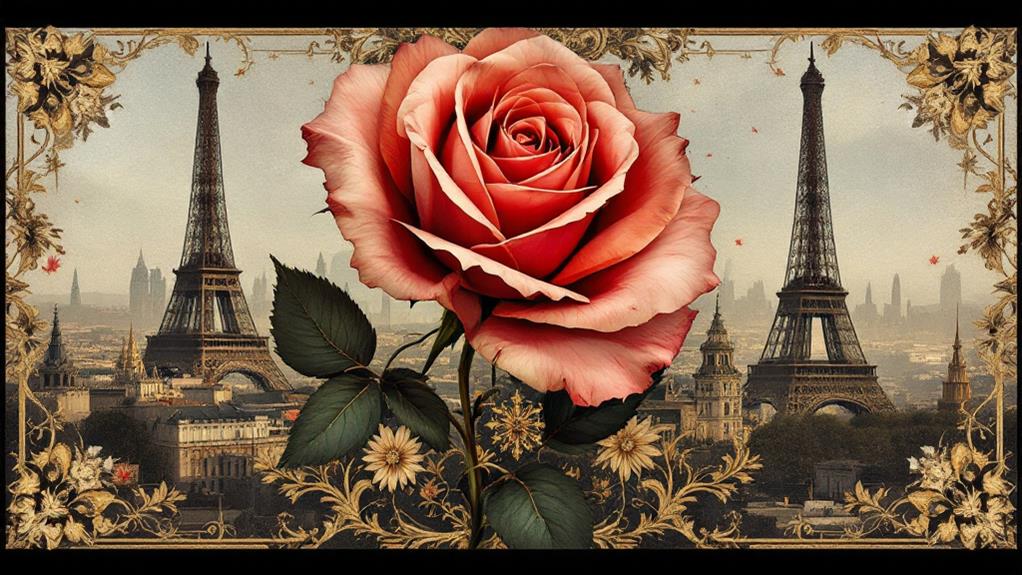
In 1964, the esteemed beauty brand Lancôme joined forces with L'Oréal, a powerhouse in the cosmetics industry. This acquisition marked a crucial moment for both companies. As Lancôme integrated into L'Oréal's impressive portfolio, which already included other luxury brands like Yves Saint Laurent and Kiehl's, it gained access to unparalleled research and development resources. This partnership greatly improved Lancôme's product innovation capabilities, allowing it to maintain its status as a leading luxury beauty brand.
You might wonder how this integration affected Lancôme's identity. Rest assured, Lancôme preserved its unique charm and continued to expand its global presence. Under L'Oréal's guidance, Lancôme's products became even more renowned, reaching beauty enthusiasts worldwide. The iconic rose, central to Lancôme's branding and product formulations, maintained its importance, symbolizing the brand's heritage and commitment to quality.
Armand Petitjean, Lancôme's visionary founder, may have passed away in 1966, but his legacy lived on. His dream of creating a luxury beauty brand was carried forward as part of L'Oréal's luxury division, ensuring that Lancôme's essence remained intact. Through this collaboration, Lancôme continued to thrive, enchanting the world with its luxurious offerings.
Signature Rose Development
As Lancôme flourished under L'Oréal's umbrella, its dedication to quality and innovation became even more evident through the development of its signature rose. Cultivated by Georges Delbard in 1973, the Lancôme rose boasts a rare and intense fuchsia pink color. This lively hue perfectly symbolizes the brand's commitment to quality and beauty, while also embodying its rich French heritage. The rose isn't just a pretty flower; it represents Lancôme's identity and plays a vital role in product formulation.
You'll find the essence of the Lancôme rose infused into diverse skincare and fragrance lines, thanks to its unique scent and hydrating properties. This integration showcases the brand's dedication to excellence in cultivating local flora and ensuring that every product delivers a luxurious experience. The rose's presence in Lancôme products highlights the brand's luxurious nature, enhancing the consumer experience with its signature touch.
Moreover, the Lancôme rose is central to the brand's marketing and branding efforts, symbolizing femininity and elegance. Its significance goes beyond its physical beauty, representing the heart of Lancôme's mission to blend nature and luxury seamlessly, creating a timeless connection with its audience.
Expansion Into Makeup
The expedition into the makeup market marked a significant expansion for Lancôme, redefining beauty standards with its groundbreaking products. In the 1930s, Lancôme ventured into makeup with a lipstick line that featured alluring French names, quickly becoming a best-seller. This initial launch set the stage for Lancôme to become a favorite among makeup artists and beauty enthusiasts alike. Fast forward to 1990, and the brand launched the iconic L'Absolu Rouge Lipstick line, celebrated for its rich pigmentation and luxurious formulation, further establishing Lancôme's reputation in luxury skincare and makeup.
Lancôme didn't stop there. In 1997, it introduced the Teint Idole Ultra 24H Foundation, praised for its long-lasting coverage. This product was so influential that it was reformulated for its 20th anniversary in 2017, demonstrating Lancôme's commitment to innovation and quality. The Hypnôse mascara collection, launched in 2004, offered diverse brush styles to meet different lash needs, quickly gaining a loyal following.
- 1930s: Initial lipstick line with French names
- 1990: Launch of L'Absolu Rouge Lipstick
- 1997: Teint Idole Ultra 24H Foundation introduction
- 2004: Hypnôse mascara collection launch
Lancôme's makeup innovations have solidified its status as a premium beauty brand in the global luxury market.
Advertising Evolution
How did Lancôme transform from a brand that claimed it would never advertise to becoming a powerhouse in the beauty sector? Lancôme initially took a bold stance against advertising, but quickly recognized the power of reaching a broader audience. The beauty brand didn't just break into advertising; it transformed it by collaborating with renowned photographers like Peter Lindbergh and Mario Testino. Their visually stunning campaigns caught the eyes of consumers globally, elevating Lancôme's status in major publications.
A key turning point was their collaboration with actress Isabella Rossellini. Her long-term ambassadorship, which spanned over 30 years, greatly improved Lancôme's image and recognition. This partnership highlighted the brand's commitment to elegance and timeless beauty. In 2006, Lancôme further diversified its advertising strategy by introducing Clive Owen as the initial male spokesperson for their men's skincare range. This move opened new avenues to engage male consumers, showcasing the brand's versatility.
The evolution didn't stop there. In 2014, Lancôme welcomed the online era with a social media marketing campaign. This modern approach allowed the beauty brand to engage directly with consumers, creating interactive and intriguing digital content that resonated with a tech-savvy audience.
Digital Marketing Strategies
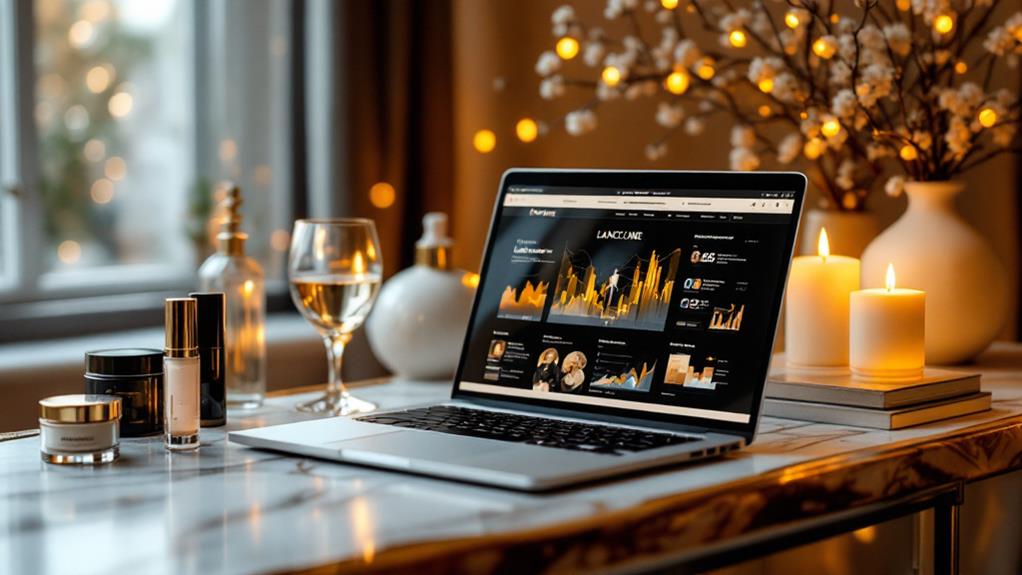
Lancôme's venture into digital marketing began as they welcomed the power of social media in 2014. By launching an impactful social media marketing campaign, they markedly increased their online presence and consumer engagement. You can see how they cleverly use digital marketing strategies to connect with a broader audience. They implemented a rewards program, encouraging customers to share their experiences on social media, which fosters a sense of community and involvement.
- Interactive Digital Content: Lancôme engages users with enthralling content that keeps them coming back for more.
- Collaboration with Brand Ambassadors: Influencers and ambassadors help Lancôme expand its reach and appeal to diverse demographics.
- Community Building: The brand creates a strong sense of belonging, enhancing customer loyalty and brand identity.
- Leader in Luxury Beauty: By adapting to modern consumer behaviors, Lancôme stands out as a leader in the luxury beauty sector.
Lancôme's digital marketing strategies expertly blend technology and consumer interaction. By focusing on interactive digital content and collaborating with brand ambassadors, they've cultivated a lively online community. This approach not only enhances customer loyalty but also firmly positions Lancôme as a luxury beauty leader. Welcome Lancôme's digital expedition and witness how they've redefined online engagement in the beauty industry.
Controversies and Challenges
Steering through controversies and challenges is inevitable for a global luxury brand like Lancôme. In 2016, Lancôme found itself at the center of a significant controversy when it canceled a concert by pro-democracy singer Denise Ho in Hong Kong. This move was influenced by a boycott campaign led by Communist Party-controlled media, illustrating the intense political pressures faced by international brands. The decision didn't go unnoticed; it led to temporary store closures in Hong Kong, showing the immediate impact such controversies can have on business operations.
Some local merchants resisted the political pressure, pointing to a divide in how businesses responded to such challenges. This incident sparked widespread discussions about artistic freedom and corporate responsibility. Denise Ho proceeded with her concert independently, highlighting her resilience and the broader issues of freedom of expression. For Lancôme, maneuvering through these political climates while maintaining its brand image proved challenging. The situation underscored the delicate balance luxury brands must strike between corporate interests and broader social values. Managing controversies like these requires a nuanced approach, as global brands like Lancôme must constantly adapt to the ever-changing political and social landscapes.
Innovation and Global Impact
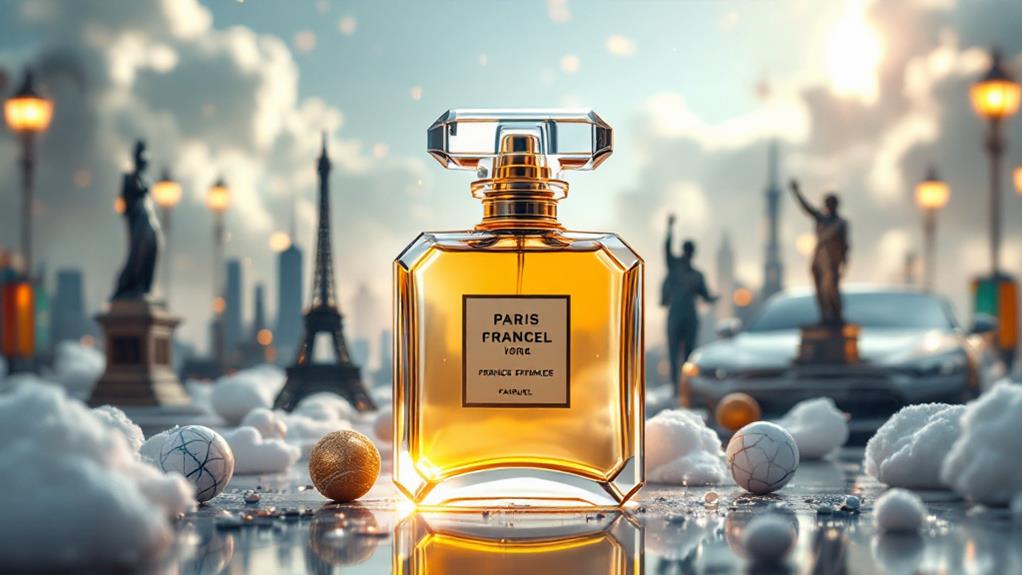
In the domain of beauty and luxury, Lancôme stands out due to its relentless pursuit of innovation and global impact. With over 4,000 researchers, Lancôme continuously pushes the boundaries in the skincare market. The brand operates multiple research labs and holds 624 patents, a demonstration of its commitment to developing cutting-edge beauty products and unique formulations. By participating in global beauty events, Lancôme has cemented its status as a leading luxury beauty brand recognized worldwide.
To keep you engaged, here's what makes Lancôme truly remarkable:
- Cutting-edge Research: Employing thousands of researchers to stay ahead in beauty technology.
- Global Presence: Active participation in international beauty exhibitions and collaborations with influencers.
- Sustainability Program: Investment in green sciences and biodiversity conservation.
- Adaptation to Trends: Collaborations with beauty experts to meet global consumer preferences.
Lancôme's sustainability program highlights its dedication to ethical practices, investing in green sciences to minimize environmental impact. Collaborations with influencers and beauty experts allow Lancôme to adapt to the ever-changing beauty trends. By leading the charge in innovation, participating in global beauty events, and prioritizing sustainability, Lancôme continues to make a significant global impact.

